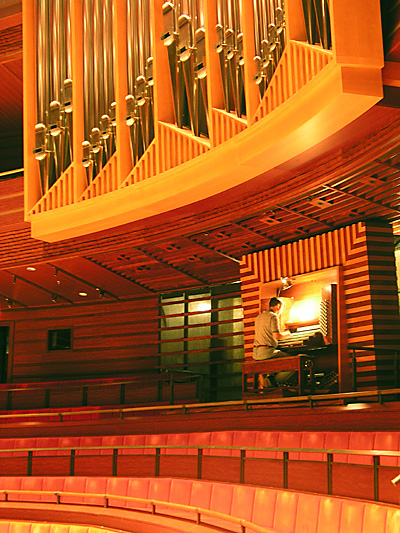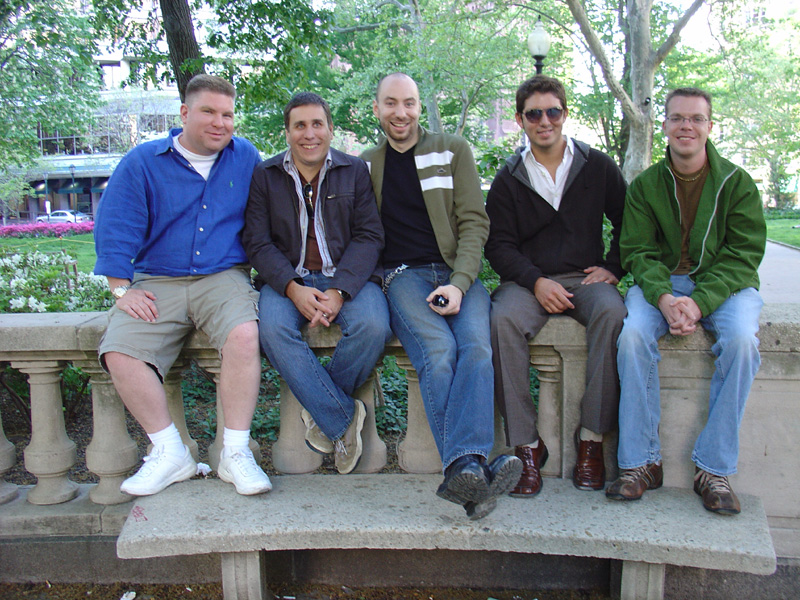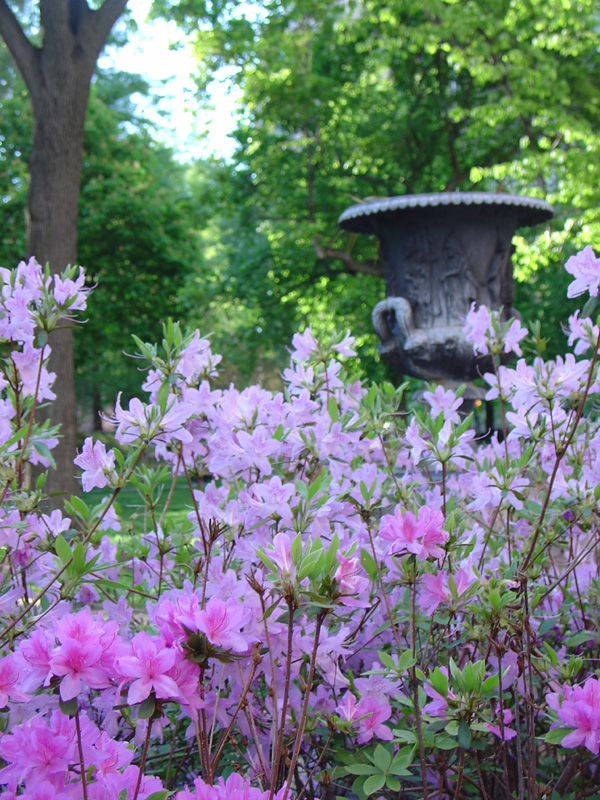Well, another IML has come and gone.
Some quick stats: this was my sixth IML. Since "coming out" to leather in 2001 I have only missed the event once. In 2001 I attended after having my first leathersex only two weeks before and I saw my first puppy party. In 2002 the man who would later become my Daddy took me to my first puppy party. In 2003 I was wearing Dad's collar on a full-time basis and at the end of the weekend he asked me to figure out how to move to NYC. In 2004 I was one Summer class away from finishing my college degree and on the verge of moving to NYC. In 2005 I judged the IML contest as a New Yorker.
By 2006 things were very much on the rocks with Dad & Moose and none of us went to IML. I don't even remember anyone bringing up the possibility.
Thus, IML 2007 was a transitional year for me. For the first time I went as a single boy with a full understanding of leathersex, the leather community, and the possibilities around me. For the first time I was obligated to no one but myself.
In some ways it was a quiet year. I did not have sex. I did not play. I flirted and licked some boots in the 16th floor cigar lounge, but that's as far as anything went.
In some ways it was a boisterous year. I reconnected with friends from Kansas City, friends from around the country, and many of the beautiful men in the IML class I judged. I passed out trick cards shamelessly and gregariously introduced myself to anyone who seemed interested or merely came too close to me. I was "on" in every sense of the word. For the first time since learning the meaning of leather community I was free to socialize at my own breakneck pace, unfettered by the need to let someone else take the lead in all things.
In some ways it was a new year. I shared a room with my club brothers Rare and Jink. They're the absolute bee's knees, and that's really all I can say about them without getting mushy, which I did more than enough of in the last post. It was the first IML each of them had attended. Rare found a new appreciation for his own hotness. Jink found new success in his work at the Leatherman and Fort Troff booths. I discovered new friendships with Matt, Christophe, and Max. Densemore is full of new life experiences and a new appreciation for NYC. And there was new leather everywhere, plus lots of other new stuff that I've forgotten due to a new appreciation for Jack & Coke.
And now, more than a week late with my IML blog post, I have new custom-made leather pants which are payment for my work at the Leatherman booth that weekend. They're the low-waist jean cut, in all black, modified with shallow L-pockets in front, inside pockets in back, light grey stitching all around, and a dozen other little changes to make them fit me just right. I love them and my butt looks fantastic in them!
And while it may sound shallow, my friends, if your butt looks good, then all is going well in the world.
Thursday, May 31, 2007
Saturday, May 26, 2007
Joy, without irony.
I'm in my hotel room at the IML host hotel, having a drink and dancing around to Tracy Bonham. I'm about to go down to the vendor mart and work at the Leatherman booth. Many of my friends are with me this weekend. Many of my friends who aren't with me this weekend nonetheless feel close to my heart.
There are times when a good feeling overcomes me so strongly that I want to cry. I like those times. I want to remember those times more often.
It's joy, without irony.
There are times when a good feeling overcomes me so strongly that I want to cry. I like those times. I want to remember those times more often.
It's joy, without irony.
Wednesday, May 23, 2007
Chicago!
I've been very bad about posting lately. I'm trying to feel bad about the fact that the situation is not going to improve until next week, but I just can't. I'm on my way to Chicago for International Mr. Leather!
IML is one of my favorite events of the year. It's held every Memorial Day weekend. I first attended in 2001, two weeks after having my first leather sex. I was a ridiculous train wreck of a boy that first year! By 2005 I had been invited to judge the contest, which was one of the more amazing experiences of my life, and something I'll never forget. Things which happened at the intervening IMLs were often milestones in my life and leather career. Last year, after five in a row, I took a year off, and I really missed it. I can't wait to get back this year!
Happy Memorial Day.
IML is one of my favorite events of the year. It's held every Memorial Day weekend. I first attended in 2001, two weeks after having my first leather sex. I was a ridiculous train wreck of a boy that first year! By 2005 I had been invited to judge the contest, which was one of the more amazing experiences of my life, and something I'll never forget. Things which happened at the intervening IMLs were often milestones in my life and leather career. Last year, after five in a row, I took a year off, and I really missed it. I can't wait to get back this year!
Happy Memorial Day.
Sunday, May 13, 2007
Superstar!
You are The Star
Hope, expectation, Bright promises.
The Star is one of the great cards of faith, dreams realised
The Star is a card that looks to the future. It does not predict any immediate or powerful change, but it does predict hope and healing. This card suggests clarity of vision, spiritual insight. And, most importantly, that unexpected help will be coming, with water to quench your thirst, with a guiding light to the future. They might say you're a dreamer, but you're not the only one.
What Tarot Card are You?
Take the Test to Find Out.
Well, yes, I could have told them I was a star. Everyone knows that, right?
However, right now I'm a very sick star. Haven't been feeling well for days. Fighting off some kind of stomach bug. It's quite debilitating and depressing.
Hopefully I'll be back on my feet in a few days. I still have organ recital reviews to write!
Tuesday, May 08, 2007
Center City Pipes.
 On May 5th, rather than drunkenly celebrating Cinco de Mayo at my local Mexican restaurant, I attended the Organ Recital Marathon at the Kimmel Center in Philadelphia. I was interested in this event for two reasons: Dobson built the new organ at Kimmel and has just won the contract to build the new front organ at the National Cathedral, and hearing four recitalists back to back will afford a unique opportunity to compare style and skill.
On May 5th, rather than drunkenly celebrating Cinco de Mayo at my local Mexican restaurant, I attended the Organ Recital Marathon at the Kimmel Center in Philadelphia. I was interested in this event for two reasons: Dobson built the new organ at Kimmel and has just won the contract to build the new front organ at the National Cathedral, and hearing four recitalists back to back will afford a unique opportunity to compare style and skill.First I'll review the Fred J. Cooper Memorial Organ. The instrument has 125 ranks and 6,938 pipes. It was built by Dobson Pipe Organ Builders of Lake City, Iowa. Manuel J. Rosales of Los Angeles consulted with Dobson on the tonal concept. The organ was built in stages: the facade and large 32' pipes were installed when Verizon Hall was completed and the remainder of the organ was installed during the Summers of 2004 and 2005, with tonal finishing taking place (at night!) in the months thereafter. It's Dobson's Opus 76, and it's a good instrument. My overall impression is that it's a very American and very secular pipe organ.
Most pipe organs one will hear are in churches. This organ, however, resides in a modern, acoustically-tuned concert hall. Entering the hall feels like stepping on a taught guitar string which is waiting to be plucked. The room is not reverberant, rather it's designed to move the sound quickly to every seat in the hall with a minimum of interference and distortions, where the tone dies soon after the audience hears it. Verizon Hall is an excellent achievement in acoustics and is no doubt perfect for nearly all the music performed there, but it is not the ideal room for a pipe organ. Doors which can be opened all along the side walls serve to reduce the sound-dispersing surfaces and add more flat, sound-reflecting surfaces, but this measure only serves as a crutch for the organ.
As an example, consider how your voice sounds while singing in the shower. Nearly everyone can sound decent in a live, hard-surfaced room, but singing in a room with wall-to-wall carpeting requires a lot more attention and skill. The same effect applies to pipe organs, most of which benefit from residing in churches that are more reverberant than your bathroom. Because a live acoustic has become associated with great organ tone, many will say that the room in which the instrument resides is at least as critical to the instrument's success as the pipes themselves.
Thus for the first few notes I heard from organ, I was a bit disappointed by the dry nature of the tone. Nearly all the tone heard happens as the organist has the keys depressed. There's no chance for the sound to "bloom" in the room.
After a while, however, I grew accustomed to the difference and began to pick out some of the finer shades of the instrument. I had been warned by a friend who played it prior to the inaugural concert that the various divisions sounded very much the same, just at different volumes. He was very much correct. The primary organ tone had a very wide dynamic range, but it did not vary much as different stops were used. The Great division sounded very much like the Swell, just a bit louder. The various trumpet stops sounded with the same tone at different volumes. While this might initially be viewed as a criticism, I imagine that the "sameness" of the instrument was actually intentional. In a concert hall environment where the organ will mostly be used to support orchestral and choral music, having a very even tone is probably critical. And the tone is very even, indeed. Soft, nearly inaudible sounds transition smoothly as more stops are added, adding dynamic possibilities beyond those afforded by enclosing the pipes. An organist and conductor are going to get exactly what they expect as the volume increases, and I can see where that will make this instrument ideally suited to its purpose.
With that said, an even tone is not really my favorite. I want more complexity to the principle stops. I want the party horns to sound distinct. I want an instrument that can convey a dozen dramatically different tone colors in the course of an hour. I want to be surprised that I'm hearing the same instrument every time a new piece begins. I want the final, grand chord of a big piece to reverberate through the room, taking five or six seconds to fully fade. The Kimmel Center organ sounded very nice, but it never surprised me or bowled me over.
The most unique sounds came, I believe, from the Positive and Solo divisions. Of course it's difficult to tell which divisions are being used based solely on which manual the recitalist is using, but by watching closely I think I got a fairly good idea of what was happening. Every now and again a new sound would emerge from behind the facade, and I'd smile. There were by no means enough unique sounds for a 125-rank instrument, but neither was the organ completely boring.
The Pedal division was also very successful. The lowest notes were bold and dense, and while they also suffered from the dry acoustic, overall they were very effective. There are four (!!) 32' stops, a number I've rarely seen in organ specifications. There is even a 64' stop included called the "Contre Bombarde Ravalement," and while I don't fully understand what that means, the name suggests that the lowest pipes of the rank are 64 feet long! I wonder if perhaps this is achieved by stopping the end of a 32' pipe, resulting in the same tone that would be produced by a pipe twice as long, while sacrificing a bit in terms of volume and depth. However it's achieved, when the Pedal is fully cranked up, I could really feel the music in my chest.
Edit: My organist friend, on whom I am bestowing the pseudonym 'Dashing,' has reviewed my review and learned me a thing or two. The 64' rank, rather than being an entire Pedal rank of that size, is really only three pipes: the A, A-sharp, and B below the lowest C in the 32' Contre Bombarde rank. My first question was: if these notes are below the lowest key on the Pedal compass (pedalboard), how does one play them? It turns out they sound when the A, A-sharp, and B Pedal keys next above the low C are depressed. This lends additional gravitas to pieces (mostly French) which end on a big A or A-minor chord. Because these are the three notes immediately below the 32' C, the pipes progress in size incrementally from 32', and probably only reach a length of 40' or so. The 64' rank does not actually have a 64' pipe, as it never goes down to the next lower C.
Also, the Contre Bombarde is a reed pipe, and some of my beliefs about these pipes were incorrect. Stopping the end of a reed pipe (a "resonator") would not serve to send the tone an octave lower. That only works on flue pipes, and works best for wooden pipes. In a reed pipe, the note is produced by the reed in the boot of the pipe, and the resonator only serves to amplify and lend depth to the sound. Therefore, the resonators of reed pipes need not necessarily be the length of the rank, i.e., a 32' reed pipe may not have a resonator that is 32' long, although that length would be ideal. Considerations such as cost and space might lead an organ builder to use a smaller-sized resonator.
Of course the most common problem with evaluating an instrument is that I generally only get to hear one organist playing at a time. It would be very easy to chalk up my reactions to the Kimmel organ as being influenced more by the recitalist than by the organ itself. However, in a feat of genius, the Organ Recital Marathon included four artists, each filling 45 minutes. In the course of my Saturday afternoon I heard dramatically different styles both of repertoire and organist, so I think I had a fair sampling of the entire instrument.
So to sum it all up: it's a good organ that is (intentionally, I think) a bit bland. I believe it will serve the Kimmel Center well. I have high hopes that Dobson will build a somewhat more interesting instrument for the National Cathedral, and as they will be incorporating the "most beautiful stops" from the old Aeolian-Skinner they will be replacing, I think my hopes will be fulfilled.
In the next few days I'll be reviewing the performance of each of the four recitalists. I'm sure you can't wait!


Sunday, May 06, 2007
Out and about.
 A very wise friend of mine says, "The secret to living in New York is getting out of New York as often as possible."
A very wise friend of mine says, "The secret to living in New York is getting out of New York as often as possible."This weekend I went to Philadelphia to visit my friend John and to hear the Organ Recital Marathon at the Kimmel Center. It's only $35 round trip on NJ Transit/SEPTA---I'd cost me more to stay in NYC!
Above you'll find Jason, John, me, Alvaro, and Price. John is a very good friend who I've known for years now and who I visit often. Alvaro is his very groovy roommate who is a clarinet player and who went to church with me today. Jason is a friend I met through John a few years back, and Price is a friend of all theirs who lives in Tampa and who I just met this weekend as he was also visiting. We're sitting in Rittenhouse Square and below you'll find some more photos of that very beautiful park on this perfect Spring day.
Later this week I'll write up reviews of the Kimmel Center organ and the recitals, as well as a review of Sunday morning Mass at St. Mark's Church.



Subscribe to:
Posts (Atom)
